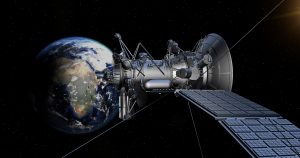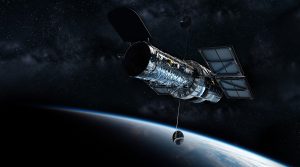Who’s Mario Livio – The Life Of A Scientist
- Posted by Steve Philips
- Posted on December 4, 2017
- Space
- Comments Off on Who’s Mario Livio – The Life Of A Scientist
 Today, at the age of 72, it’s hard to imagine that Mario Livio may lack a single thing that a person might want out of life. He’s married to Sofie Livio, an established microbiologist at the University of Maryland, and has three children with her – Sharon, Oren and Maya. He worked at the Space telescope Science Institute (which operates the Hubble telescope) for fourteen years, and is currently involved in the American Association for the Advancement of Science. He has written six different books in the span of seventeen years, all of which became best-sellers and enjoyed critical and commercial success. He’s got a blog on the Huffington Post and a Twitter account with over 6,500 followers. At this point, it’s hard not to see Dr. Livio as someone living the American Dream, but what most people don’t know – and what he’s typically reluctant to discuss – is that he had to fight tooth and nail to get it.
Today, at the age of 72, it’s hard to imagine that Mario Livio may lack a single thing that a person might want out of life. He’s married to Sofie Livio, an established microbiologist at the University of Maryland, and has three children with her – Sharon, Oren and Maya. He worked at the Space telescope Science Institute (which operates the Hubble telescope) for fourteen years, and is currently involved in the American Association for the Advancement of Science. He has written six different books in the span of seventeen years, all of which became best-sellers and enjoyed critical and commercial success. He’s got a blog on the Huffington Post and a Twitter account with over 6,500 followers. At this point, it’s hard not to see Dr. Livio as someone living the American Dream, but what most people don’t know – and what he’s typically reluctant to discuss – is that he had to fight tooth and nail to get it.
Mario had the misfortune of being born to Jewish parents in Romania in 1945 – a time when most of Europe had a particularly unfavorable outlook on Jews. Both of his parents had to flee the country to avoid persecution when he was only a few months old, leaving him to live with his grandparents for the first five years of his life, which he rarely discusses, but has described as “Oliver Twist-like”. In 1950, Romanian Jews were pressured to leave the country, so he settled in Israel alongside his grandparents, reuniting with his mother. Upon maturing, he was forced to enlist in the Israeli Defense Forces (like every other young person living in Israel), serving for three years as a paramedic and then continuing to serve for 40 days each year until 1991. His military service saw him engage in three separate conflicts between 1967 and 1982, working in a mobile hospital that could be easily transported by boats or choppers (and then parachuted down to places that need it). During peaceful times, he pursued a bachelor’s degree in physics and mathematics at the Hebrew University of Jerusalem, a master’s in theoretical particle physics at the Weizmann Institute and eventually defended a Ph. D in theoretical astrophysics at Tel-Aviv University, beginning a ten-year career as a physics professor at the Technion – Israel Institute of Technology.
 In 1991, Dr. Livio received an offer from NASA to join the Space Telescope Science Institute as the head of the Archive Branch. Archival work, of course, isn’t exactly what most scientists dream to be doing at NASA, so in 1999 Dr. Livio began shifting his research, focusing on black holes, acceleration of mass, white dwarves, neutron stars and particularly on supernova explosions. He wrote about his discoveries and observations in his 2000 book “The Accelerating Universe”, which was praised by many as simplifying many complicated concepts in physics so that non-scientists could understand them without being condescended. Finding inspiration and a style that he felt he could call his own, the man began work on a second book, which eventually came out in 2003 titled “The Golden Ratio”. It did for mathematics what “The Accelerating Universe” had done for space, simplifying a lot of really complicated concepts and presenting them to the general public in a language most people could understand. The book was a huge hit, earning multiple accolades (such as the Peano Prize in 2003 International Pythagoras Prize in 2004) and proving once and for all that Mario Livio was just as skilled as a writer as he was as an astrophysicist. Over the next decade and a half, he would write four more books, finding success with each one. And while Dr. Livio retired from active duty at the Space Telescope Science Institute in 2015, his latest book “Why? What Makes Us Curious” coming out in 2017 and ranking on the New York Times’ best-sellers list soon after release.
In 1991, Dr. Livio received an offer from NASA to join the Space Telescope Science Institute as the head of the Archive Branch. Archival work, of course, isn’t exactly what most scientists dream to be doing at NASA, so in 1999 Dr. Livio began shifting his research, focusing on black holes, acceleration of mass, white dwarves, neutron stars and particularly on supernova explosions. He wrote about his discoveries and observations in his 2000 book “The Accelerating Universe”, which was praised by many as simplifying many complicated concepts in physics so that non-scientists could understand them without being condescended. Finding inspiration and a style that he felt he could call his own, the man began work on a second book, which eventually came out in 2003 titled “The Golden Ratio”. It did for mathematics what “The Accelerating Universe” had done for space, simplifying a lot of really complicated concepts and presenting them to the general public in a language most people could understand. The book was a huge hit, earning multiple accolades (such as the Peano Prize in 2003 International Pythagoras Prize in 2004) and proving once and for all that Mario Livio was just as skilled as a writer as he was as an astrophysicist. Over the next decade and a half, he would write four more books, finding success with each one. And while Dr. Livio retired from active duty at the Space Telescope Science Institute in 2015, his latest book “Why? What Makes Us Curious” coming out in 2017 and ranking on the New York Times’ best-sellers list soon after release.
